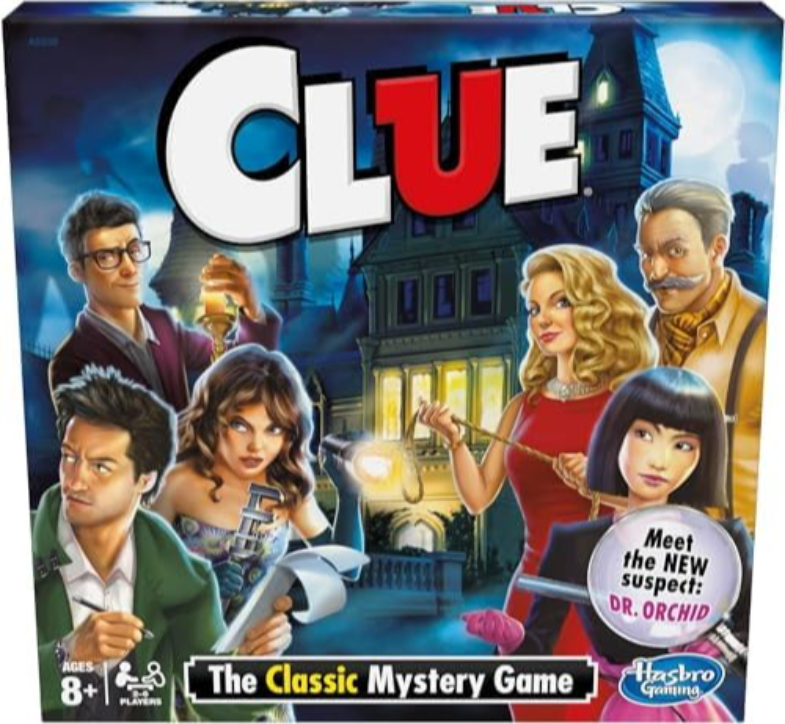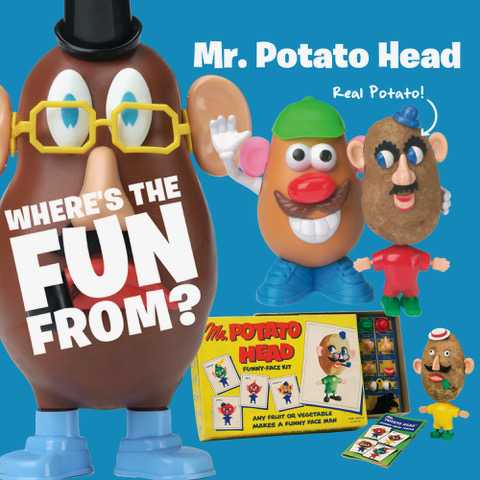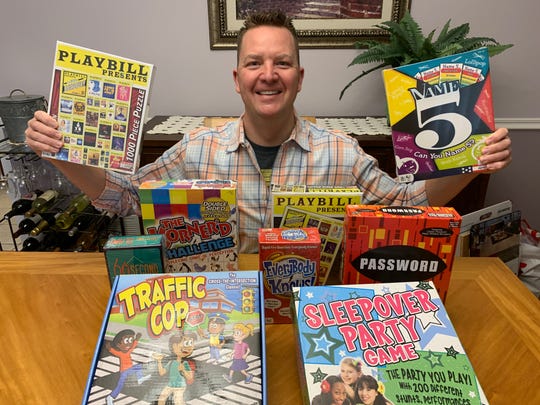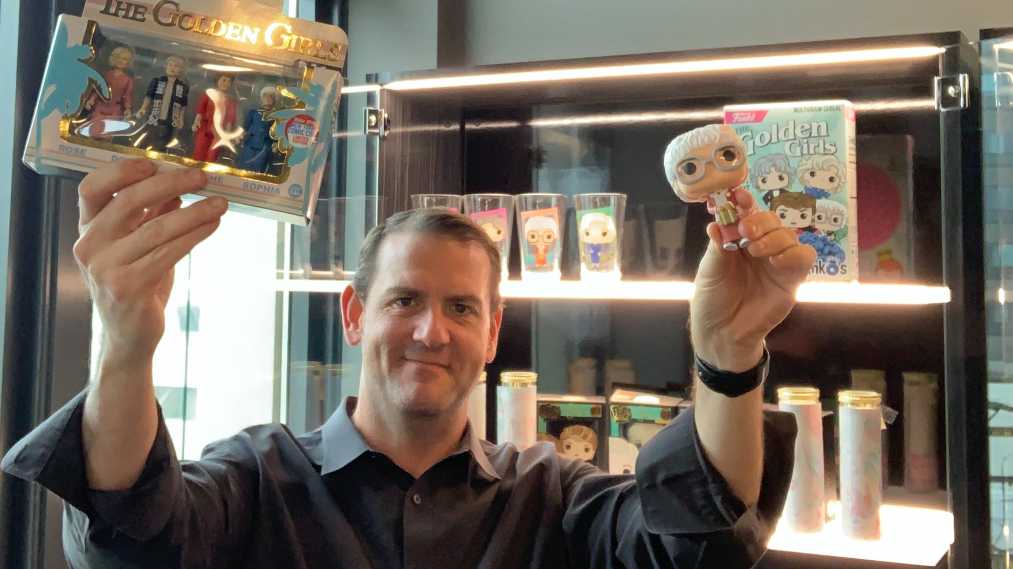Cluedo (Clue)
Gameplay
The game is played on a board depicting the nine rooms of the mansion where Mr. Boddy was found murdered. There are also six weapons and six suspects, and it is the job of the players to figure out who murdered Samuel Black, with what weapon, and in what room. Each player assumes the persona of one of the six suspects: Professor Plum, the academic, Miss Scarlett, the femme fatale, Colonel Mustard, a retired military officer, Dr. Orchid, Boddy’s adoptive daughter who has a PhD in plant toxicology, Mr. Green, a suave conman, and Mrs. Peacock, the stylish, widowed, socialite.* All characters have motive to kill Mr. Boddy, it’s just a matter of figuring out who did it, using what, and where.
The weapons include a rope, dagger, wrench, pistol, candlestick, and lead pipe. And the rooms, a.k.a. possible murder sites, are the hall, the lounge, the dining room, the kitchen, the ballroom, the conservatory, the billiard room, the library, and the study.*
Set Up:
- Each player takes on the persona of one of the characters to use as a game piece to move around the board.
- Place one weapon in each of the rooms at random
- There are three decks of cards: one with the suspects, one with the rooms, and one with the weapons. Without peeking, place one card from each deck in the envelope provided. There you have the answer to the mystery. Distribute the rest of the cards evenly among the players
- Each player takes a pad to help them keep track of what clues they’ve uncovered.
Rules:
- Players role a die to travel around the game board to different rooms. As soon as a player enters a room, they may make a suggestion. For example: I suspect Miss Scarlett, in the Conservatory, with the dagger. They suggestions must include the room they’re currently in.
- Once a player makes a suggestion, the other players must disprove it. So, the player to the left of the suggesting player must privately show one and only one of the of the three named cards. If the person to the left doesn’t have any, the next player must try and disprove it. The players’ turn ends when their suggestion is completed.
- Once a player feels they have the answer, they can make an accusation (but only on their turn). The accusing player then privately looks at the cards in the envelope. If they match their accusation, they show them to the other players and the game ends. If they don’t, the accusing player is out
*These characters, rooms, and weapons are according to the instruction manual I have in my home and may be different according to which edition you have
History
Clue was invented by Anthony E. Pratt, a British musician. He spent his days playing the piano in country hotels and on cruise ships, until World War II struck, and he found himself working on a drilling machine in an engineering factory manufacturing components for tanks in Birmingham. He found the work particularly boring, but it was during these hours that he came up with the idea and design of Clue.
In 1944, Pratt applied for a patent of the game, which he originally called Murder! Then, he and his wife, Elva Pratt, who helped design the game, sold it to Waddington’s executive Norman Watson, who changed the name to Cluedo, which was a play on the work “clue” and the Latin word “Ludo,” which was the name of a popular board game based on Pachisi. When it was licensed to Parker Brothers in America in 1949, the game was renamed Clue, because Ludo was not a well-known game in the States.
Pratt later said that the inspiration for Clue was a murder mystery parlor game he and his friends used to play when they were kids. “We would congregate in each other’s homes for parties at weekends,” he described. “We’d play a stupid game called Murder, where guests crept up on each other in corridors and the victim would shriek and fall on the floor.”
After designing and selling the rights to Clue, he and his wife and their newborn baby moved to Warwickshire and opened a sweets and tobacco shop. Eventually they moved to Bournemouth, and during this time Pratt worked as a solicitor’s clerk for three years before retiring. In their retirement, they moved back to Birmingham and enjoyed playing music and reading, especially detective fiction. Pratt developed Alzheimer’s towards the end of his life, and moved into a nursing home, where he passed at the age of 90. In 2013, he was honored with a plaque crediting him as the creator of Clue, which is installed at No.9 Stanley Road, Kings Heath, in England.
Clue is now owned and published by Hasbro.
Variations
There have been numerous variations and editions of Clue published since it was first released in the 1940s. Some have different characters, weapons, and rooms, but all follow the same general rules. When Clue was being produced both in the US and in the UK, their publishers, Parker Brothers and Waddingtons, respectively, each produced their own unique editions. When Hasbro purchased both companies in the early 1990s, they continued to produce unique versions for each market until 2002, when the current edition of Clue was released. After this, the games were simply localized based on regional differences in spelling and other conventions.
In 2008, Hasbro did its first major revamp with Cluedo: Discover the Secrets. The board, characters, weapons, rooms and even some of the rules of gameplay were redesigned. For example, new weapons include a baseball bat, an axe, a dumbbell, a trophy, and poison. New rooms include the Guest House, the Patio, the Spa, the Theatre, the Living Room, and the Observatory. Hasbro also introduced a second set of cards: the Intrigue cards, which include Keeper and Clock cards. Keepers give players special abilities, while Clock cards are more sinister: the first 7 clock cards mean nothing, but the 8th and final card means you’ve been murdered and are out of the game.
Marmalade Game Studio also developed a digital adaptation to be played on mobile devices, including Clue: Master Detective, Cluedo: 50th Anniversary, Clue: Nostalgia Edition, and Clue: Vintage Edition.
Reception & Awards
Games magazine named Clue one of the Top 100 Games in 1980, Top 100 Games of 1981, and Top 100 Games of 1982.
Clue was actually made into a film in 1985 based on the board game. As you might guess, six guests are invited to Mr. Boddy’s New England mansion, all of which Mr. Boddy has been blackmailing. His butler, Wadsworth, knows this, and has called the police on Boddy, but Boddy threatens to expose everyone’s secrets if they turn him in. He presents the guests with weapons—the same ones used in the game—and suggest they kill Wadsworth to protect their secrets. The lights go out, a gunshot is heard, and Boddy is on the floor. Was there a murder in the mansion? You’ll have to watch to find out.
There was also a 1997 musical, a 2-11 mini-series, numerous books, and several video games made based off of the board game, and this year, a theatrical adaptation of the Clue film began a US national tour.
Recent Blogs
Recent Blogs

Biographies and Interviews
Catching up with Eric Olsen, The Inventor of Flip 7 and Co-Creator of Messy Table Games
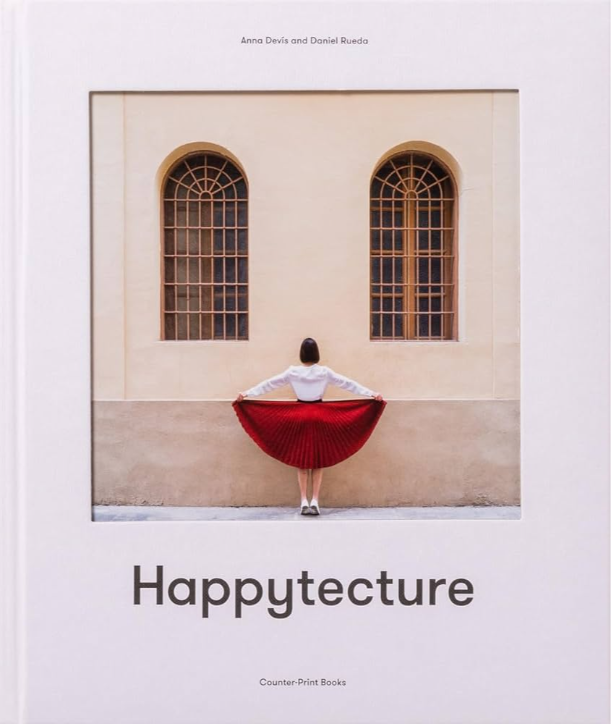
Reviews
Book Review: Happytecture by Anna Devís & Daniel Rueda

Biographies and Interviews
From Stage Lights to Game Nights: McMiller’s David & Julian on Shark Tank (Dec 10th), Viral Success & Building a Business With Your Husband
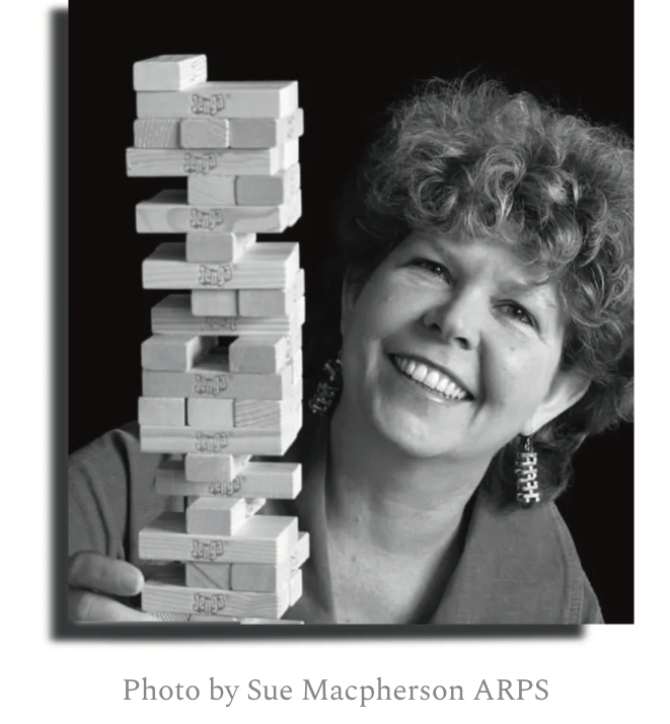
Press Release
Leslie Scott (creator of Jenga) announces the launch of BOUNDLESS PLAY

Press Release
New Study Highlights the Importance of Shopping from Trusted Toy Brands & Retailers this Cyber Monday
See more
Recent Wiki

BOOK REVIEWS
Toy Review: Monster Jam Smash & Bash Grave Digger Monster Truck
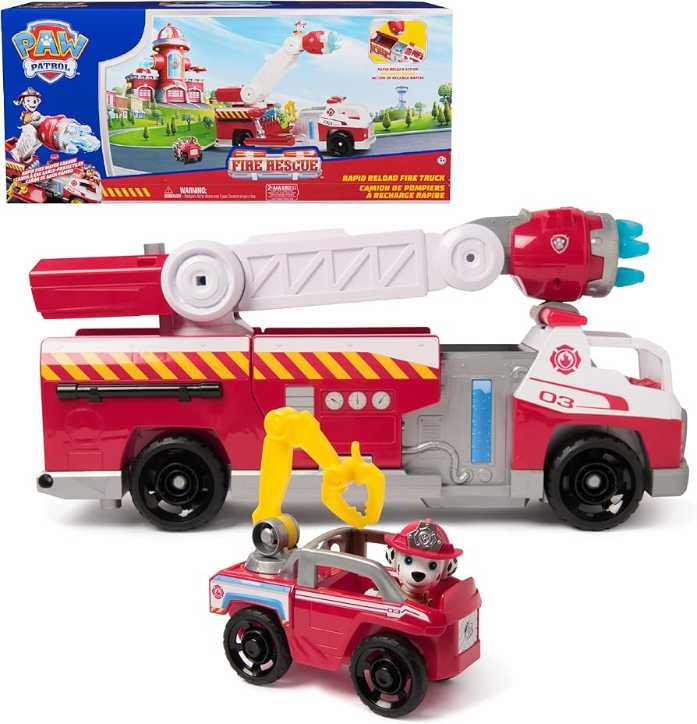
BOOK REVIEWS
Toy Review: Marshall's Rapid Rescue Fire Truck

COMPANIES
Zigazoo Secures Partnership with YouTube Star Like Nastya to Inspire Millions of Kids
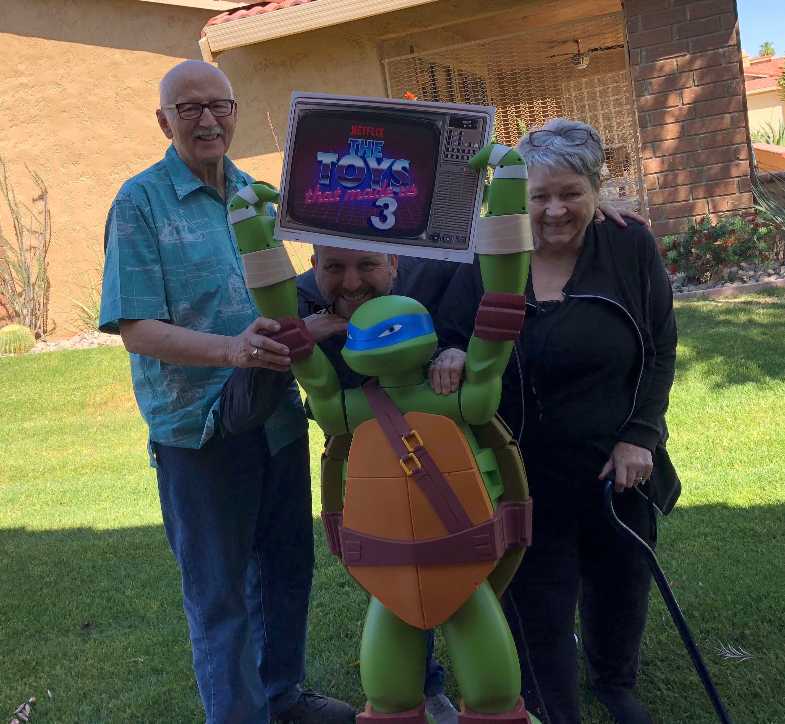
PEOPLE
A Legacy of Play: Inside the Carlson Family’s Multi-Generational Journey Through the Toy Industry

COMPANIES
Radio Flyer Studios Announces the Launch of its First Original Animated Series, Max & Maple: The Can-Do Kids
See more
POP's Got Talent

POP Entertainment
Randy Klimpert Shares his Ukulele Collection
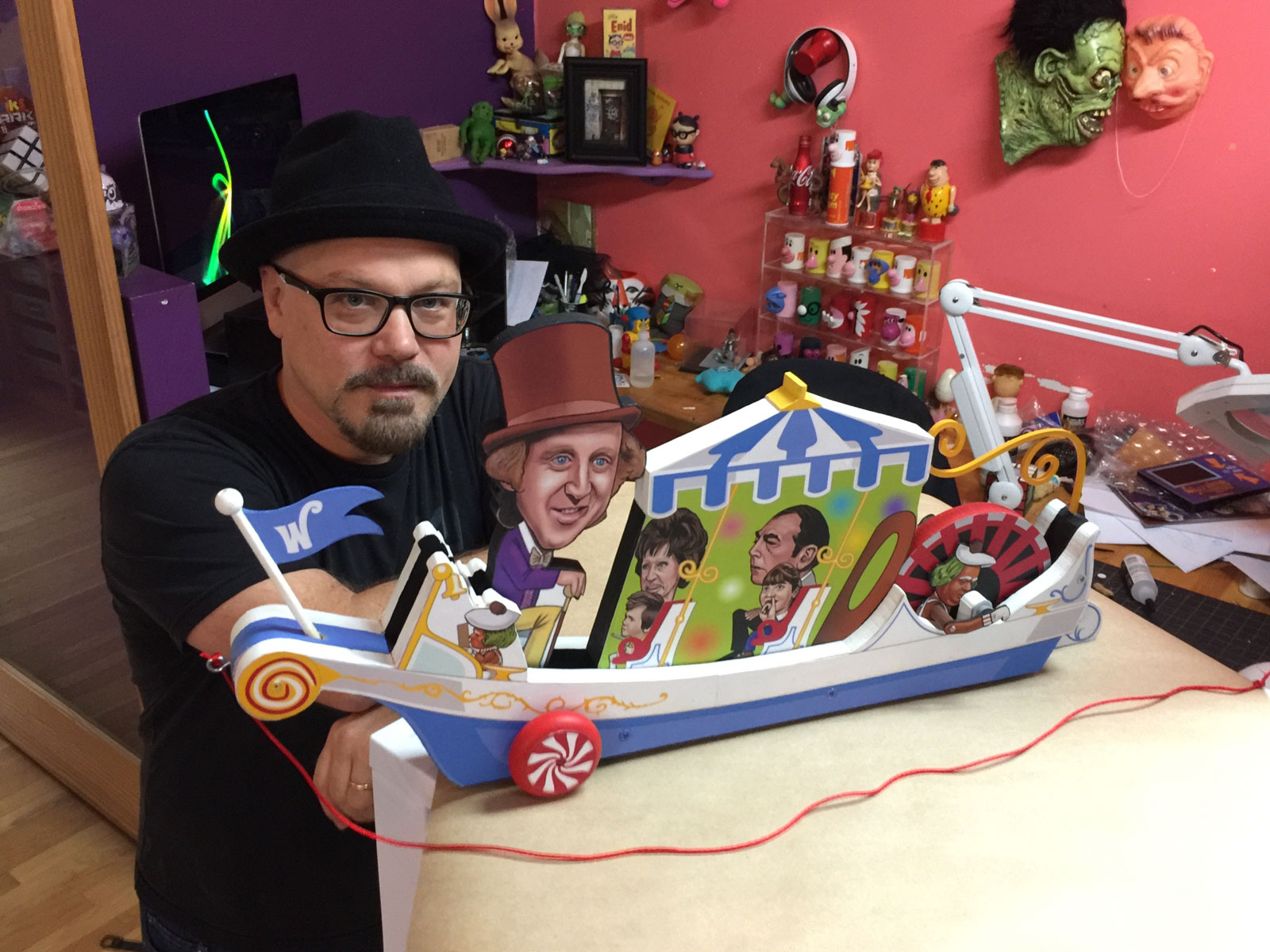
POP Entertainment
Steve Casino Peanut Art

POP Entertainment
Everyone's Talking about POP!
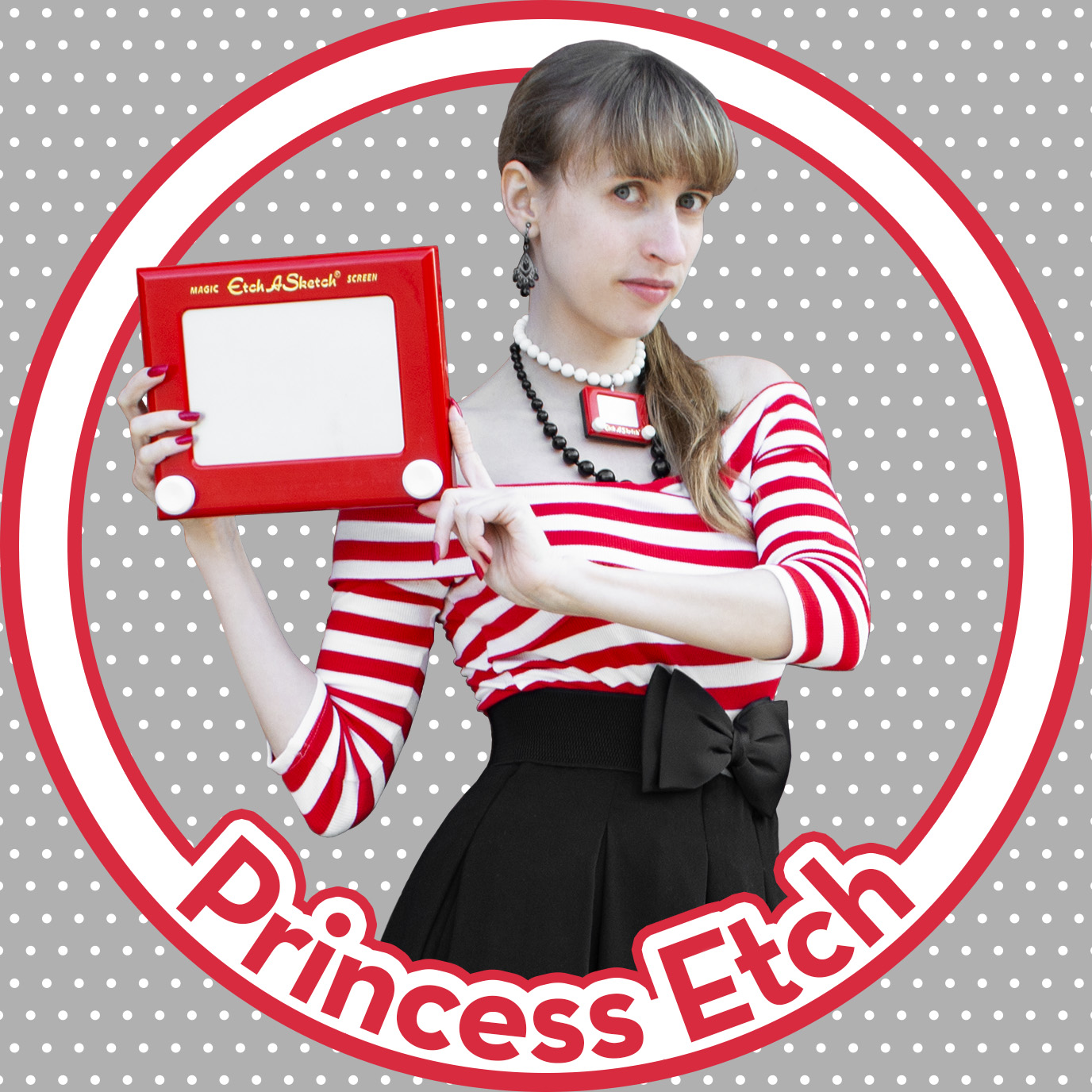
POP Entertainment
Princess Etch - a Multi-Talented Etch A Sketch Artist

POP Entertainment
Joseph Herscher of Joseph' s Machines.
See more
Recent POPcast
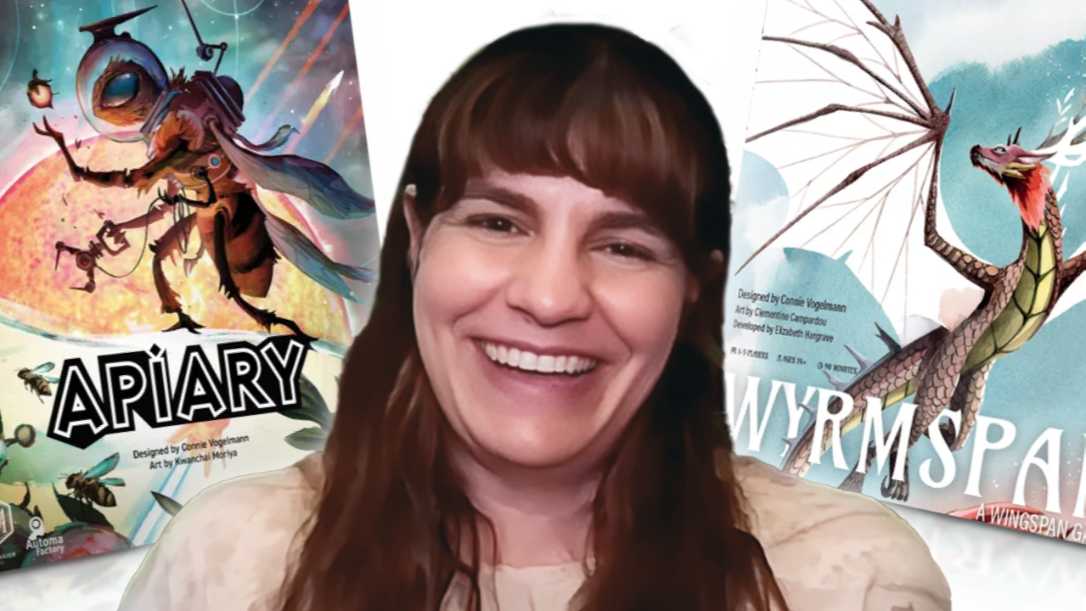
Hidden Role: The Brains Behind your Favorite Games
Connie Vogelmann designed Apiary & Wyrmspan!

Hidden Role: The Brains Behind your Favorite Games
Bob Fuhrer... Is THE Crocodile Dentist!

Hidden Role: The Brains Behind your Favorite Games
Tom Dusenberry... Bought Atari, Wizards of the Coast, and Avalon Hill!

Hidden Role: The Brains Behind your Favorite Games
Matt Leacock created Pandemic... the game!

Hidden Role: The Brains Behind your Favorite Games
Scott Brown and Tim Swindle... are Launching a New Sport!
See more
POPDuos

POPDuos: Interviews with Legends and Leaders
POPDuo: Richard Dickson, Mattel’s President & COO, and Kedar Narayan, Young Inventor Challenge AMB

POPDuos: Interviews with Legends and Leaders
POPDuo: Will Shortz and Josh Wardle

POPDuos: Legends and Leaders Explore Creativity
POP Duo: Elan Lee, Co-Founder, Exploding Kittens.and Jeff Probst, Host and Exec Producer, Survivor

POPDuos: Legends and Leaders Explore Creativity
POP Duo: David Fuhrer, MNG Director, Blue Sq Innovations & Shawn Green, past Dodgers & Mets MLB Star

POPDuos: Legends and Leaders Explore Creativity
POP Duo: Bob Fuhrer, Founder, Nextoy and Tom Fazio, Golf Course Designer
See more




